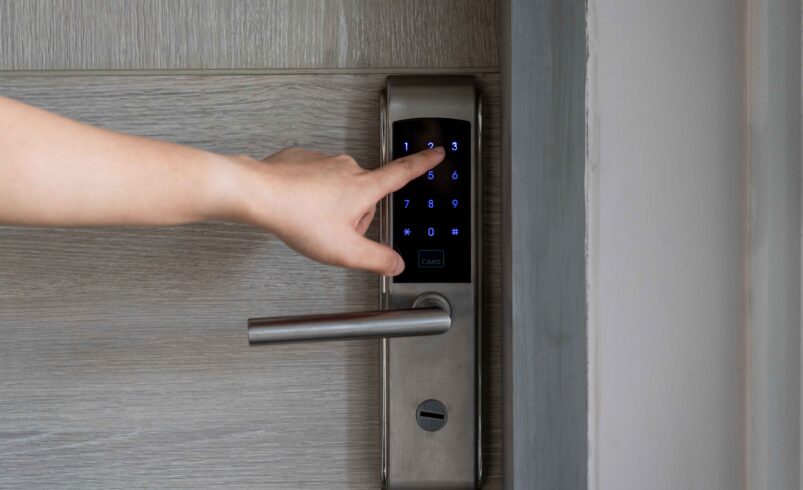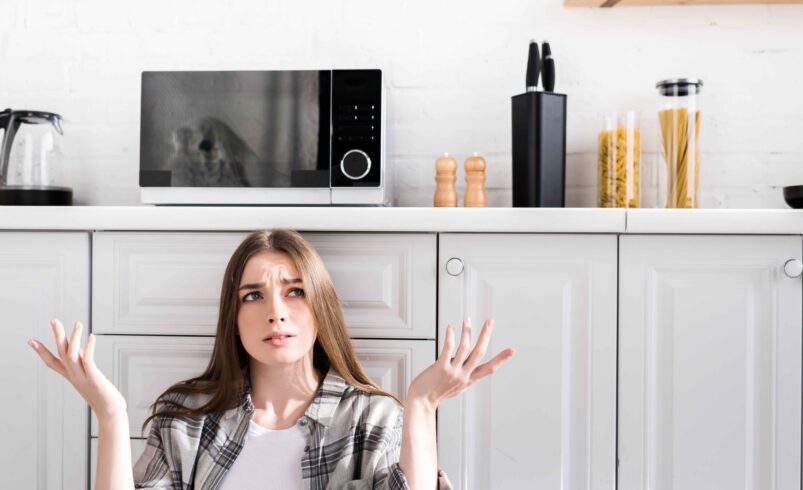Smart Door Lock Not Locking or Unlocking Properly?
- July 2, 2025
- 0
🚪 Introduction: When Smart Security Gets TrappedSmart door locks are designed to provide hands-free convenience and improved home security — but when your smart lock does not respond,
🚪 Introduction: When Smart Security Gets TrappedSmart door locks are designed to provide hands-free convenience and improved home security — but when your smart lock does not respond,

🚪 Introduction: When Smart Security Gets Trapped
Smart door locks are designed to provide hands-free convenience and improved home security — but when your smart lock does not respond, locks haltingly or authorizes nothing, it is a serious problem and vulnerability rather than an inconvenience. Whether you’re attempting to lock your house up at bedtime, or letting a guest in on your behalf, a smart smart door lock that won’t lock or unlock feels like being locked out of your own smart home.
At Testergate, we test smart home products under real-world conditions, similar to the conditions you may find yourself trying to make a smart door lock operate — think weak Wi-Fi, cold weather malfunctions, etc. If your smart lock is not operating properly, this guide will walk you through why it may have stopped functioning, and how you can fix it step-by-step, without relying on any brand-specific instructions, that could ultimately leave you frustrated or confused.
🔍 Common Reasons Why Smart Door Locks Malfunction
⚠️ 1. Low Battery or Battery Drain
Most smart locks rely purely on battery power. Lame or dying power may lead to:
slow or partial locks,
delayed response to commands, or
complete failure to lock and execute the locking bolt itself.
Indicators: You hear some weak motor noise, you get low-battery indications.
⚠️ 2. Door or Strike Plate Alignment
If your door isn’t aligned properly, the deadbolt could jam or not extend properly — even if the lock motor is working.
Signs:
You hear the lock working and clicking
It works when in the open position, but not when in the closed position
⚠️ 3. Connectivity Issues
A smart lock may also not respond to app or voice commands if it is out of range of the hub or phone.
Signs:
The app says the lock is “offline”
Remote access does not work, but does manually
⚠️ 4. App Permissions or Firmware Bugs
An outdated app, or withdrawn permission may prevent your smartphone or hub from communicating the appropriate signals to the lock.
⚠️ 5. Internal Motor or Gear Failure
With a lot of use, the internal locking mechanism will wear out over time and it can cause a low power motor to run but not totally turn the bolt.
Signs:
The motor “sounds” like it’s working but the bolt does not move
Locking/unlocking is not consistent or sometimes requires multiple tries
⚠️ 6. Installation/Calibration Error
If the installation was not straight or the lock has not been calibrated following the relocation of the door/frame, it may not register the direction or bolt length.
🛠️ Step-By-Step Fixes: How to get your Smart Lock working Again
✅ 1. Change or Recharge the Batteries
Action: Take off the battery door, and install new batteries of the same kind.
Tip: Don’t mix old and new batteries, and don’t use poor quality batteries.
Why: A low battery condition is the #1 reason locks slow or close to a stop.
✅ 2. Is the Door Aligned
Action: Open the door and try the lock/unlock; if it worked great open but not closed:
If successful, you need to:
Tightened screws on your door hinges.
Adjust the strike plate to be sure it’s lined up with what it was designed to work with, you’re good.
If still problematic, sand or adjust door alignment slightly.
Why: Any physical misalignment will interfere with locking/unlocking.
✅ 3. Re-Set the Lock and Re-Calibrate
Action: Resetting is different depending on the lock, you can use the in-app recalibration or the manual instructions, either way, usually involves pressing a button for however long they say.
Why: Makes the lock aware of the range of motion and allow the lock to confirm positive engagement of the bolt.
✅ 4. Reboot or Resync Lock with App
Action:
Force close the app
Reboot/Reset your smartphone or smart hub
Open app and check connection
Re-add the lock if required
Why: App/hub glitch
✅ 5. Update Firmware
Action: If you’re using the lock app, check for firmware updates in the app if you still have access to it. While your lock is being updated, make sure your device is nearby and has a full battery.
Why: Hardware manufacturers often release firmware updates to fix performance bugs and communications bugs.
✅ 6. Check the Lock Mechanism
Loose gears
Slipped motor connector
Mechanical issues
Physical Blockage
Why: Most motion failures will be a result of some sort of internal mechanical wear or other assembly failure, not a result of not receiving a signal.
✅ 7. Reset the Lock and Re-Pair Device
Action: Factory reset the lock, then follow the remaining regular association instructions for either Bluetooth or Wi-Fi to re-pair the device to your app or smart home hub.
Why: Factory resetting your device removes any corrupted configurations, and you should be fully responsive again.
✅ 8. Disengage Smart Hubs/Routers with Too Many Devices
Action: Temporarily disconnect any unused smart devices or reboot your router, and bring the router or hub within 20–30 feet of the lock to check the difference.
🧪 Testergate Recommendations
At Testergate, we test smart locks in real-world simulation scenarios such as:
A door with an uneven door frame
A door that is experiencing Wi-Fi drop outs at peak times
A door that is experiencing app failures after a mobile OS update
Based on our testing, here are our top recommendations:
✅ Use quality alkaline or lithium batteries and change them every 3–4 months
✅ Recalibrate your lock after adding new weather stripping, door seals, or hinges
✅ Test functionality on a weekly basis if you are depending on remote access
✅ Keep firmware and apps up to date, especially after an OS or hub update
Now we have provided field-tested recommendations and not just suggestions based on theory.
🏁 Final Thoughts
First, a smart door lock that is perpetually locked or unlocked is not only an inconvenience—it also poses a serious safety risk to your home and family. Thankfully, in most cases, they can be repaired, and this usually requires a mix of mechanical adjustments, new batteries, and digital calibrations.
At Testergate, we want to help you troubleshoot these smart home hiccups before they become costly to address. Our goal is to allow you peace of mind, whether you are locking up from your phone or with a touch from your remote.


